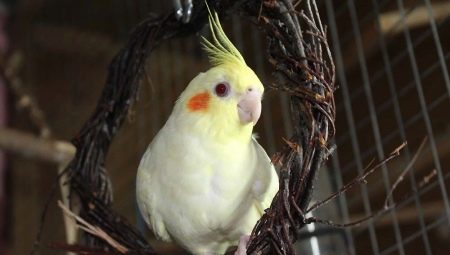The Australian resident - the cockatiel parrot (another name is the nymph), is a member of the cockatoo family and belongs to the order of the parrot-like genus Nymphicus. In their natural habitat, these birds nest in forests or shrubs located on the banks of rivers and reservoirs. Sometimes they visit semi-desert plains and steppe areas with grassy vegetation. Wild corals are shy: to quench their thirst, the parrot flies close to the surface of the water and in an upright position takes a few hasty sips.
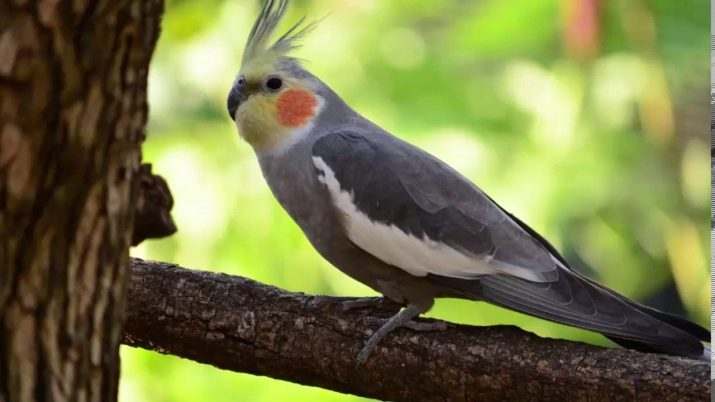
The main food for birds is grass seeds and small insects. On eucalyptus trees, nymphs regale themselves with nectar of inflorescences, and when wheat ripens in the fields, parrots pay a visit there and peck grains with pleasure.

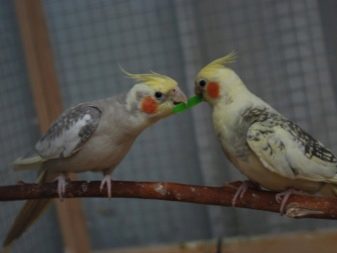
Description
The Corella parrot is a small bird, its size, taking into account the tail, is 30–35 cm. The tail is long - 15–16 cm - and pointed at the end. The weight of an adult Corella is 95–110 grams. Feathers grow on the back of the head of the parrot, forming a crest, the beak is curved, small in size. Adult males have a brighter color than females. The males have a feathery color in rich gray-olive shades, the cheeks are bright orange-yellow, and the crest is yellow.
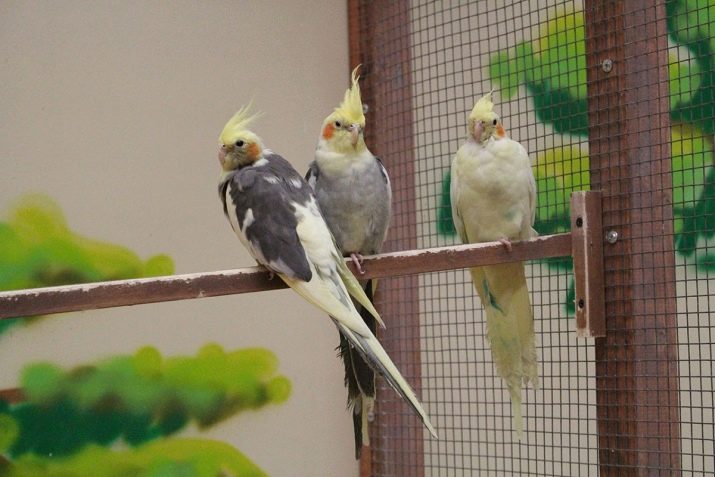
The female is more modestly colored - her feathers are of a usual light gray color, her cheeks are pale brown, and her tuft and head are pale gray with a yellowish tint. Young chicks of any gender look the same in color as an adult female. Fly and tail feathers have light yellow oval spots. There is a yellow bar on the outside of each steering pen on the underside. If the male is a chick, then when he grows up, the yellow spots and streaks disappear from him, but remain in the females.
Color change of feathers occurs a year after birth.
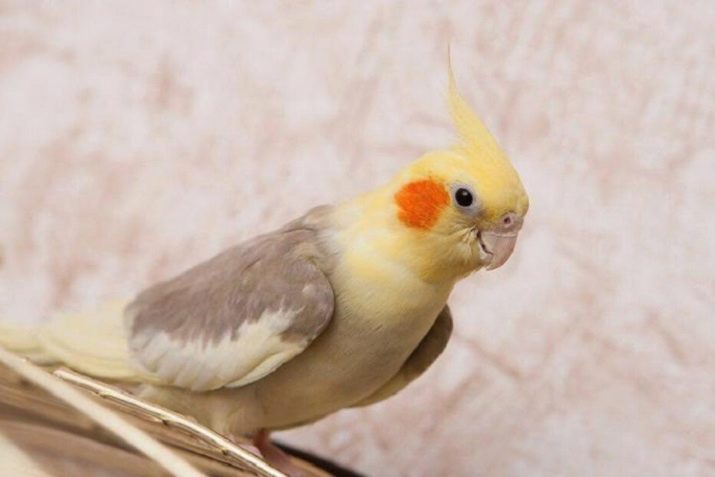
In the wild, the nymph breeds during the rainy season, when there is a lot of food for adult parrots and their offspring. Since the corals are awake and sleeping in the trees, they prefer to equip their nests in the same place, choosing hollow areas inside the dried branches. During the rainy season, parrots manage to lay two egg-laying.
Each clutch contains from 3 to 7 eggs. The egg looks ordinary - it is white and up to 2 centimeters in size. Both parents hatch eggs - during the 21st day the male replaces the female. Toward the end of the incubation period, small chicks covered with a yellow fluff appear. The female and male take part in feeding the babies also in turn. Chicks leave the nest after 5-6 weeks.
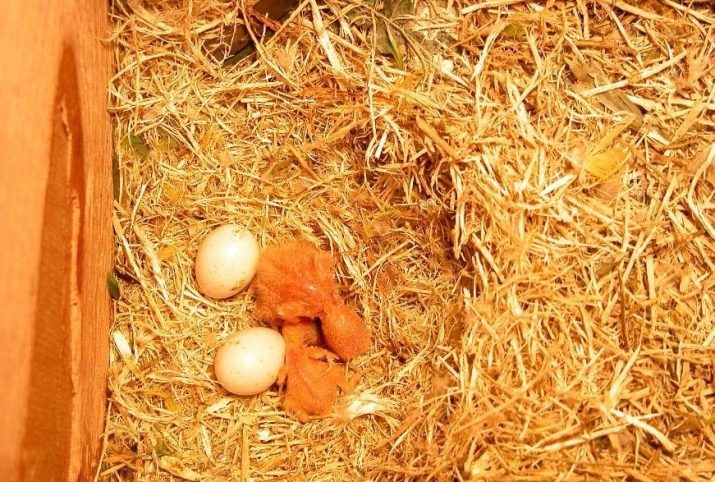
During the feeding period of the first brood of chicks, the female lays the next egg laying, and the whole process is repeated again.
Corells adapted well to captive breeding, and over time they managed to breed breeds that differ in plumage color. The life expectancy of a parrot in the wild habitat does not exceed 10-15 years. Birds live in groups of 10-50 or more representatives. Parrots tend to gather in flocks during the breeding season or during prolonged droughts. In captivity, with proper care, nymphs can live up to 25 years.
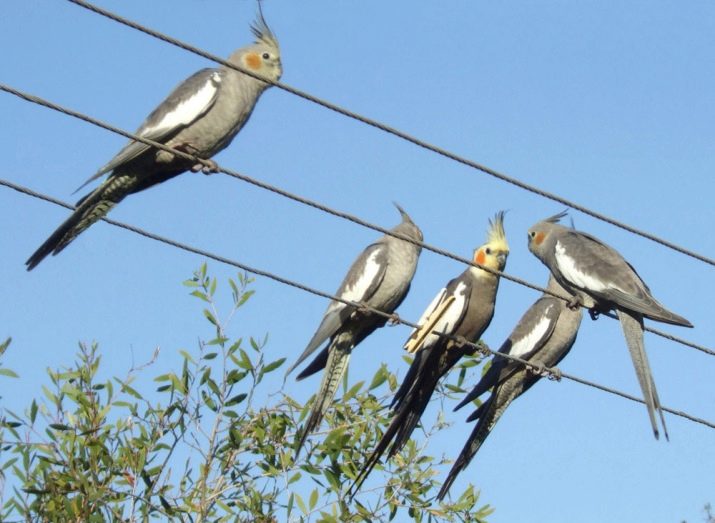
Colors
Due to the fact that the nymph breeds well in captivity, ornithologists and breeders have managed to breed various subspecies of these birds, which differ in plumage color.
Description of the most common species.
- White coloring - the eyes of the birds are black, the main plumage with a pronounced yellow hue. In males, light feathers grow in the area of the undertail and a pair of such feathers are in the tail. In the female, the tail feathers are all light, and in the area of the undertail according to the main tone of the color, we will see a marbled light yellow pattern.
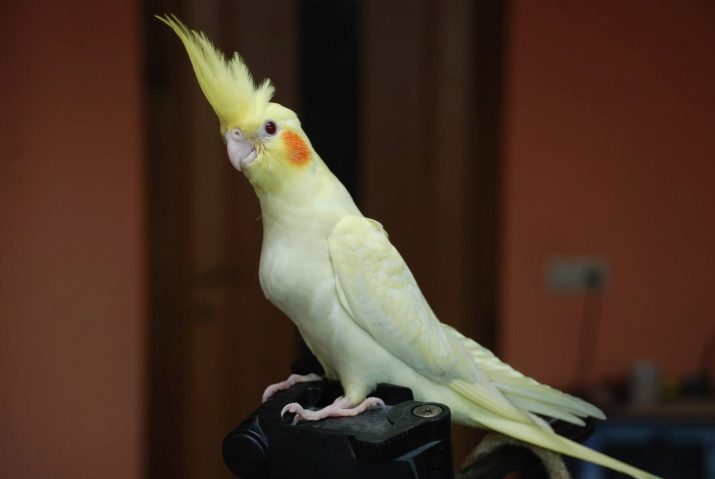
- Albinos - the eyes of birds are red due to the fact that pigmentation is absent at the genetic level. The nymph feathers are white or with light cream tinting, but the feathers on the head, including the crest, are yellow in color, and the cheeks are orange. In albino males, the whiteness of feathers is more pronounced than in females. Females may have yellowish spots on the wings, in the undertail.
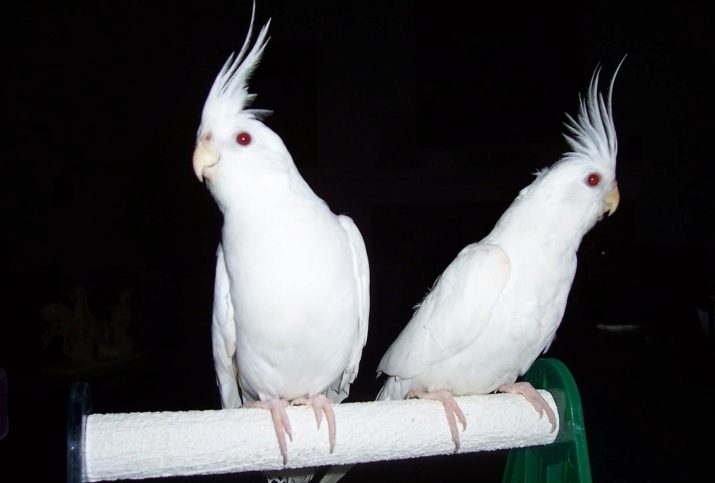
- Light gray color - eyes black, feathers of a pale gray color. This subspecies was obtained by crossing gray and white species, so all the other signs of a nymph of a light gray color were inherited from a gray species - a yellow head and tuft, orange cheeks, light tail feathers.
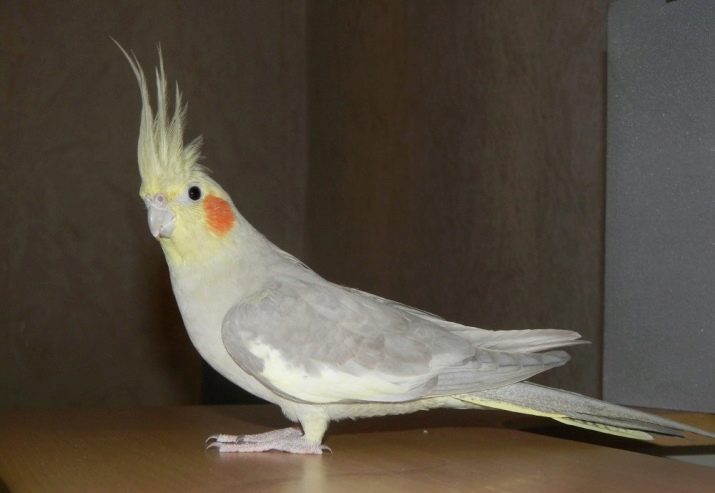
- Color lutino - eyes are red, and the color of the feathers is yellow. White feathers can be seen on the wing, and very bright orange spots on the cheeks.
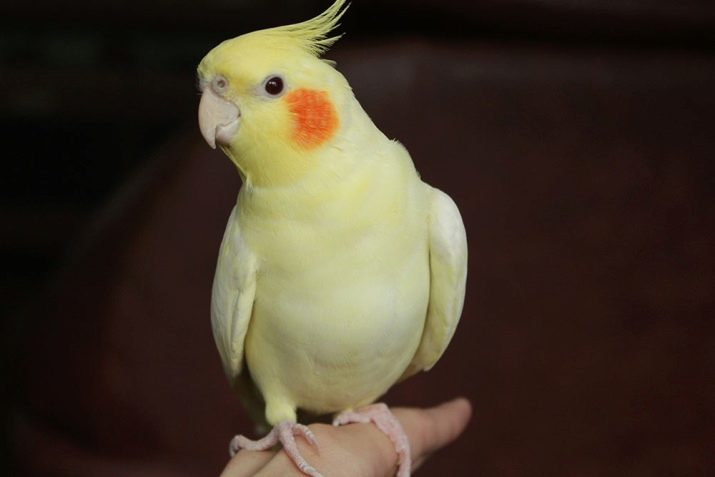
- Cinnamon color - this subspecies has a dark beige color of the main feathers, and on the head there may be yellow feathers and the same color of the crest. The cheeks are yellow in females and orange in males, the tail feathers of the wing are light yellow. The eye color of the parrots is black.
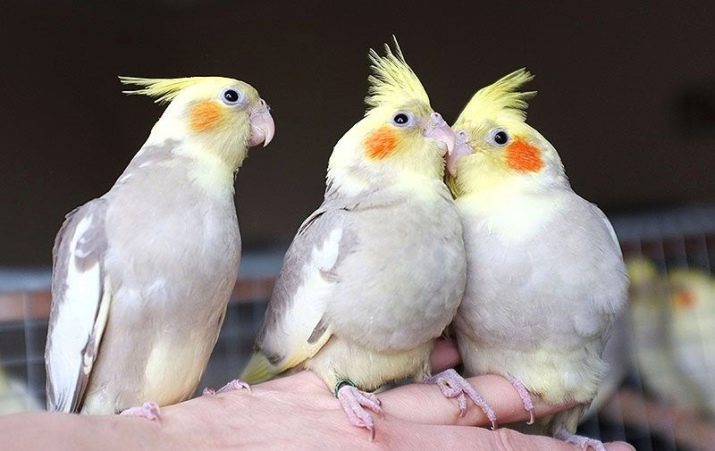
- Dark yellow color - is a variety of cinnamon color. The plumage ranges from light cream shades to rich yellow. In the process of species mutation, it is noteworthy that only gray feathers change color, while the rest of the color remains the same as that of gray Corelli.
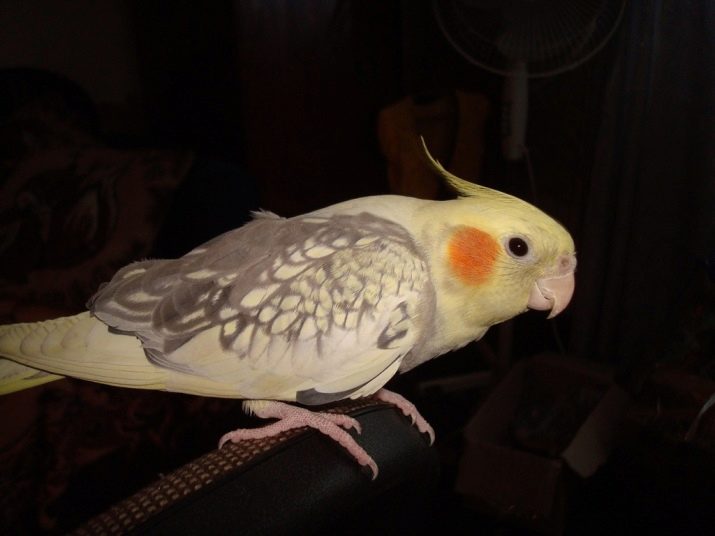
- Sheki coloring - The peculiarity of coloring is that there are white blotches on the plumage of the parrot. The most valuable is the individual in whom the spots are symmetrical while maintaining equal proportions of the basic shade and white color.
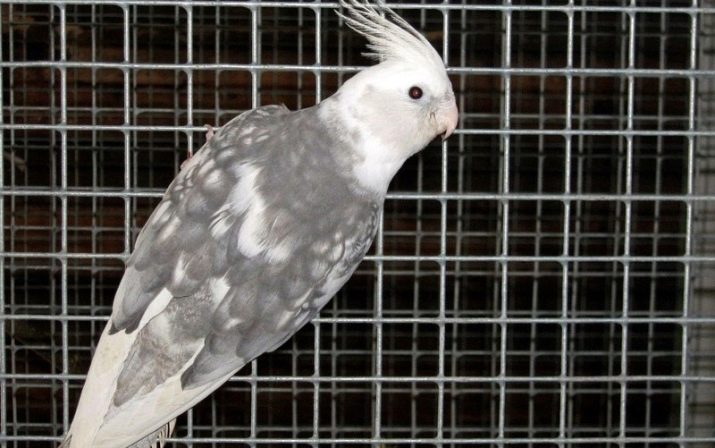
- Pearl-barley-motley color - the edges of the feather plates are dark, and the central region is white or pale yellow. The intensity of the primary color ranges from dark to light shades. The primary color may be gray or cinnamon. This coloration for life is preserved only in females. Males lose expression of color contrast during molting.
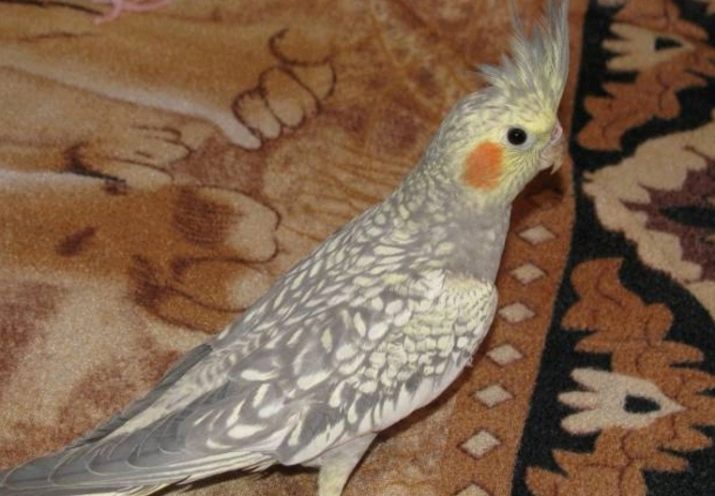
- Motley silver color - the feathers of these birds, at first glance, are the same, bright, but upon careful examination, you will see two shades on each feather - white and pale gray. The intensity of this combination in different subspecies varies from very light tones to darker ones. The cheeks, tuft and head with a silver color have a yellowish or cream tint. There are species in which the cheeks retain an orange color.
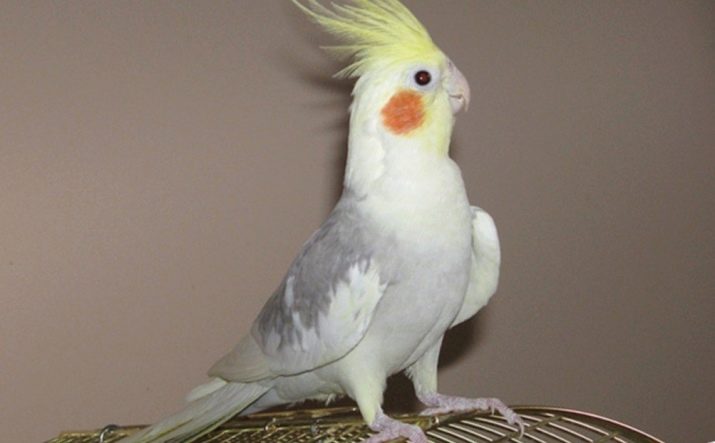
- White face - the head and tail feathers are painted white, while the rest of the feathers are gray or cinnamon. White-faced species do not have a pronounced color of feathers in the cheek area. The crest is usually the same color as the bulk of the feathers, but only a lighter shade.
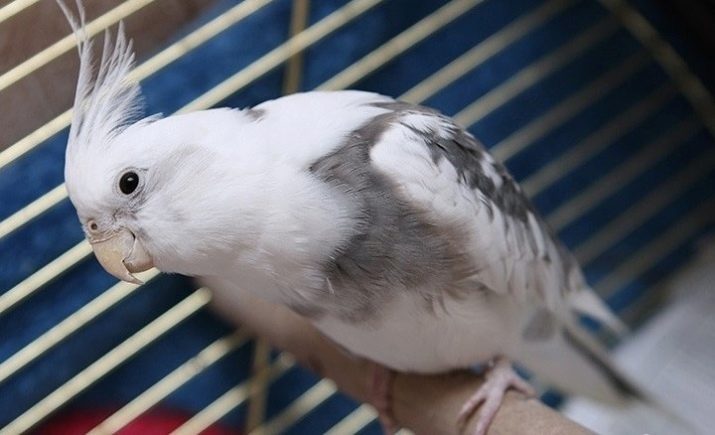
- White-winged species - it is characterized by the fact that when stained, like a regular gray nymph, white-winged parrots have white feathers in their wings.
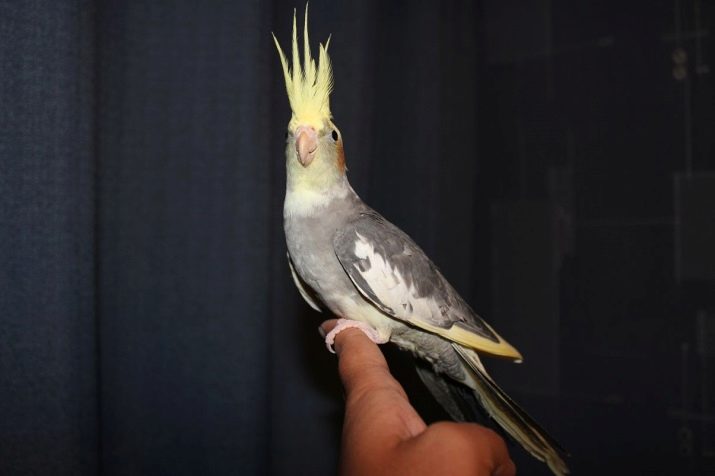
- Black-winged species - with the usual gray plumage there are feathers of a darker color on the back, in the area of the undertail and wings. On the wing of the black-winged species you will always see a whitish spot. Males and females of this species differ little in color from each other.
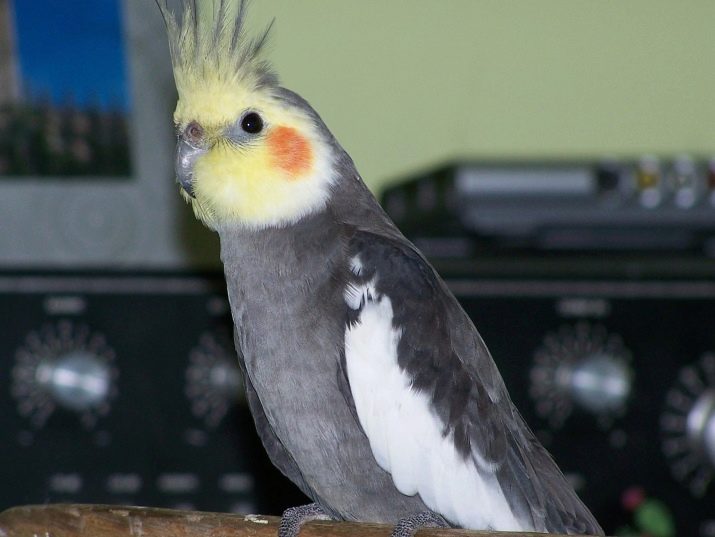
In fact, there are a very large number of types of coloring of nymphs: white-faced motley cinnamon, pearl gray, pearl cinnamon, pearl barley lutin, white-faced pearl barley and so on. In a number of countries, exhibition standards for Corelli color already exist.. It is the nymphs, in comparison with all other parrots, who recorded the largest number of plumage coloring options.

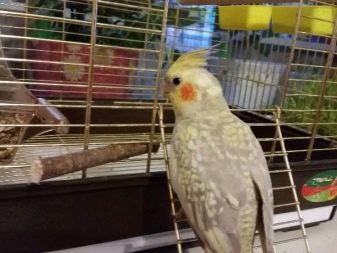
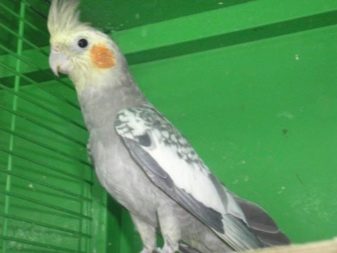
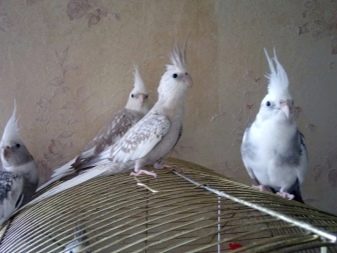
How to choose?
It is better to buy Corella at a pet store, where they go on sale from trusted suppliers, having passed veterinary control. They come to the store in the morning or in the evening and watch the nymphs at the time when they are most active. This must be done in such a way as not to attract the attention of the bird - for this, stand near the cage.
A healthy individual behaves actively - she is interested in food, toys, cell neighbors and even what happens outside of it. If the bird is sluggish and indifferent to everything, then this is a sign of its ill health. Sometimes a parrot can just sleep and you will see that it is sitting on a perch, holding it tightly with one paw.
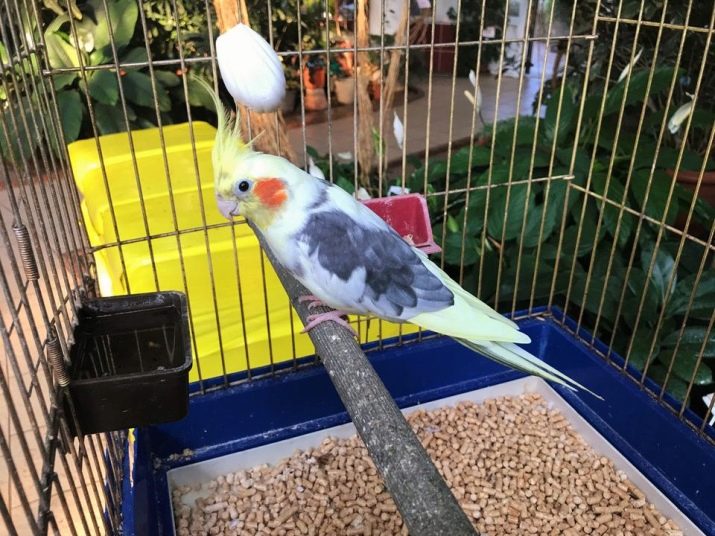
Before buying, inspect the appearance of the parrot, taking it carefully in your hands. Make sure that all the feathers are in place, there are no bald spots, sores on the body, the feathers are not tousled and lie smoothly. Look at the paws - all fingers should be in place, whole and healthy. We turn to the beak - outwardly it should look smooth, without damage, with a correct, tight closure; we immediately look at the nasal passages - in a healthy nymph they are dry, without secretions.
The eyes of a healthy bird are always bright, shiny, without tearing.

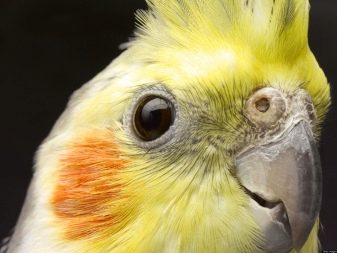
Pay attention to how the bird eats. If she actively searches for food and eats it - this is a good sign. Look at the litter - it should be a thick consistency, while in sick birds the litter is watery.
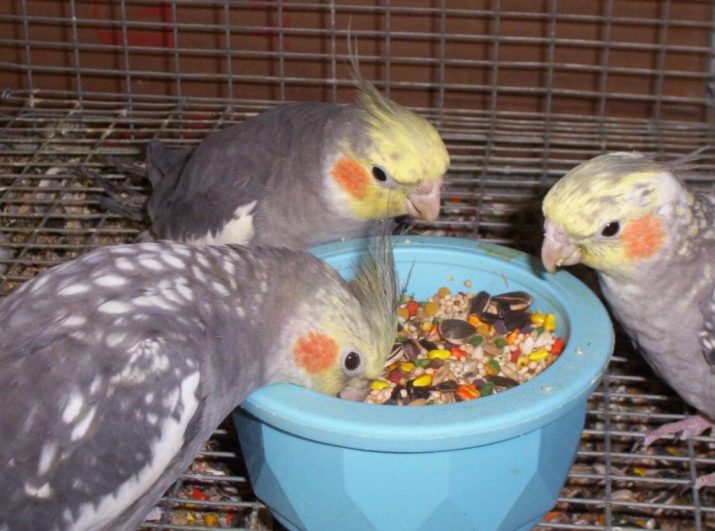
When choosing a corella, pay attention to its behavior. If you want to find a parrot that will be friendly and will contact you, pay attention to the most active, noisy and curious individuals, they willingly let you pull yourself together. Best of all, nymphs from 5 to 6 weeks get used to a person. Of course, it also happens that a bird cannot get used to a person because of its timidity, but this is more an exception than a rule.
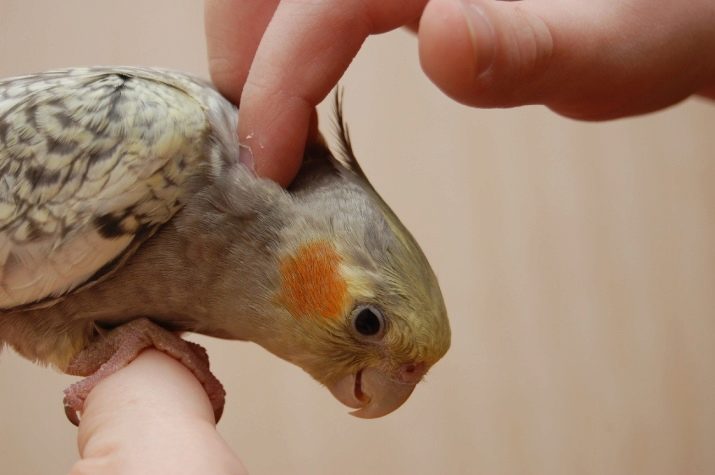
If the goal of your purchase is to breed Corelli, then choose adults from the age of 1.5 to 2 years. For healthy offspring, take birds from different litters so that there are no genetic family ties between them. Determining the sex of the nymph is a difficult task, the easiest way to do this is for birds with gray traditional colors, when the plumage clearly shows where the male and female are. In hybrid species, sex determination is difficult and an inexperienced breeder can easily miss.
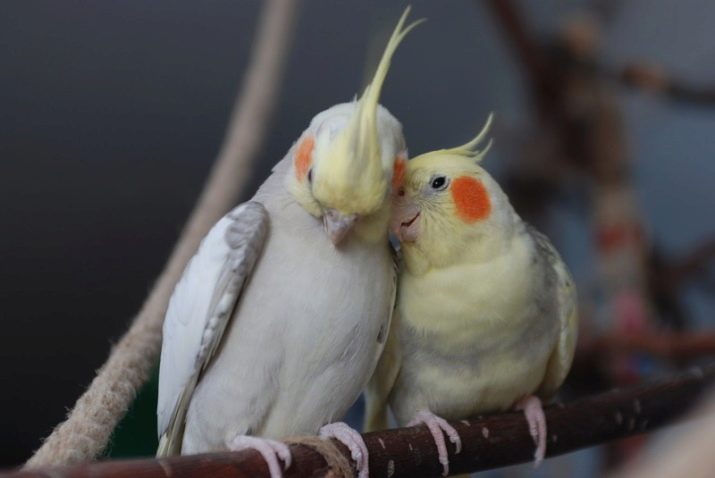
Taming nuances
The acquisition of a long-awaited pet is always a joyful and exciting event, but for a nymph, new living conditions are always stressful. Before making contact with the corrella, the pet should be given 2-3 days to adapt - at this time it is best to leave it alone, protecting it from harsh sounds, flashes of light, smells. To calm Corella, you can gradually begin to talk with her in a quiet voice. So you will begin to accustom her to yourself and cause interest.
Soon you will see that the parrot is very sensitive to communication, and it is necessary for him. To make friends with a parrot faster, the bird cage should be at the level of your eyes. When the nymph is left alone, she can turn on the radio or TV, creating the sounds she needs.
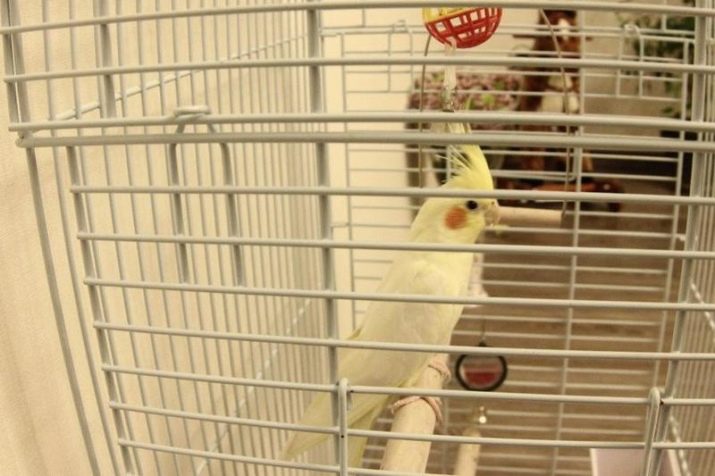
Next, you need to teach the bird to stay with you outside the cage. To do this, take the curella out of the cage and go with it to the room with the windows closed, so that the pet does not fly out onto the street. The bird is released, and when it sits on some object, they approach it and speak friendly. Over time, the nymph gets used to you and she can be taught to sit on your hand.
The learning process is not fast, it is repeated over and over again and soon the bird will get used to doing what you expect from it.
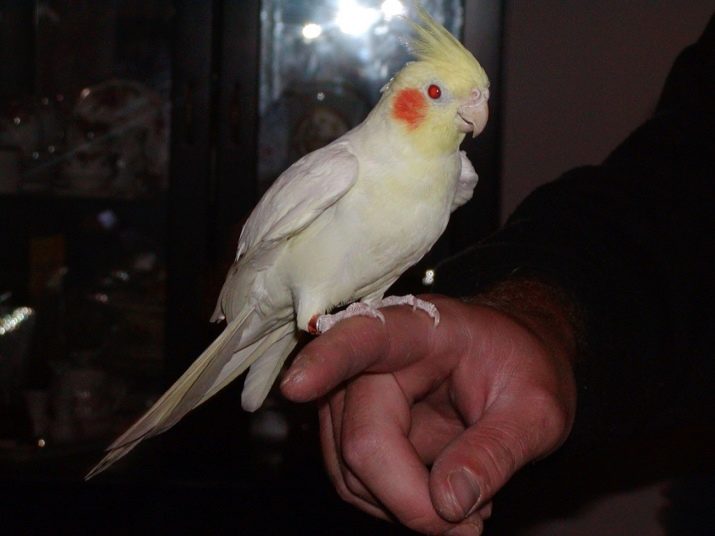
In order for the taming process to go smoothly, you need to praise your pet and give treats for each success. Parrots love it when they pet their feathers, pick them up and pay attention.
Maintenance and care
If you decide to start a Corella, you need to understand that breeding will be associated with certain financial costs. You need to buy a spacious cage, toys, two containers for food - dry and wet, a drinking bowl, a tank for swimming. In addition, you will need a small carrying in order to carry a pet to the veterinarian in it.
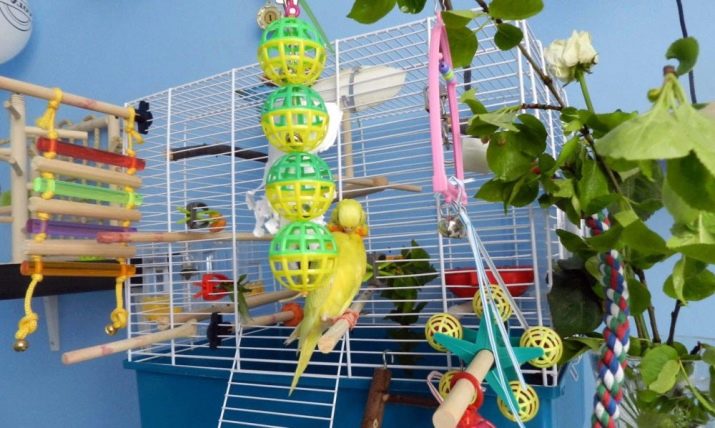
The parrot diet should contain grains in the form of 65–70%, and the rest include vegetables, fruits, boiled beans and corn, greens. There must always be fresh water in the cage, which must be changed immediately after contamination.
All raw vegetables and fruits must be washed before giving the bird.
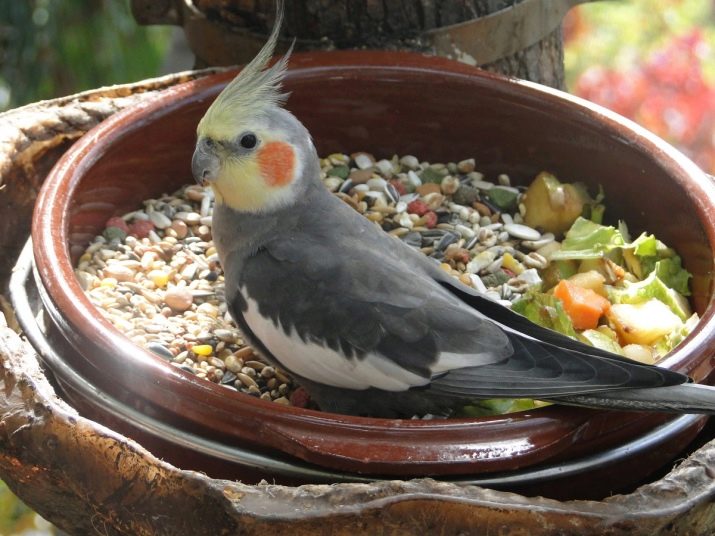
It is necessary to accustom the bird to water procedures - so that the cockatiel does not hurt, it is irrigated with feathers every few days. To do this, take a spray gun and spray 1-2 times with warm water to the pet in feathers. Soon, when you see you with a spray in your hands, the bird itself will begin to be active in water procedures - it will spread its wings and wait for irrigation.
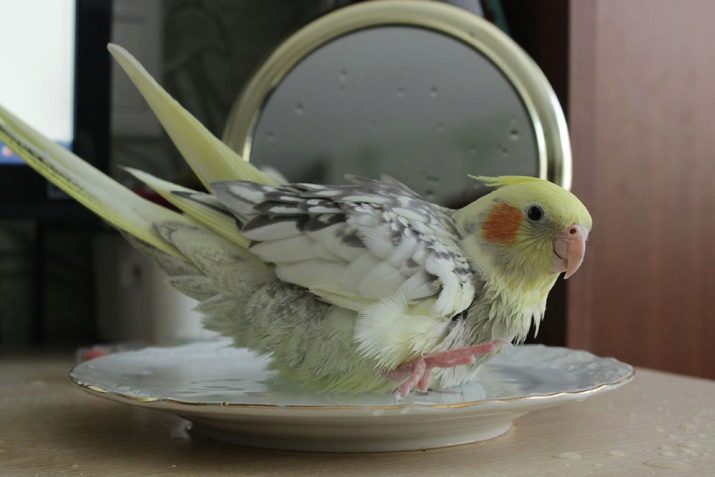
Corellas love to bathe in water stalls, but they don’t perform such procedures if the room is cool, otherwise the pet will catch a cold.
From October to December, the parrot begins to molt - it discards old feathers and grows new ones. Usually this time coincides with the breeding season. The pet becomes aggressive and experiences constant itching due to a change in plumage. At this time, he needs to be given vitamin and mineral supplements, and also be protected from sudden changes in temperature and humidity.
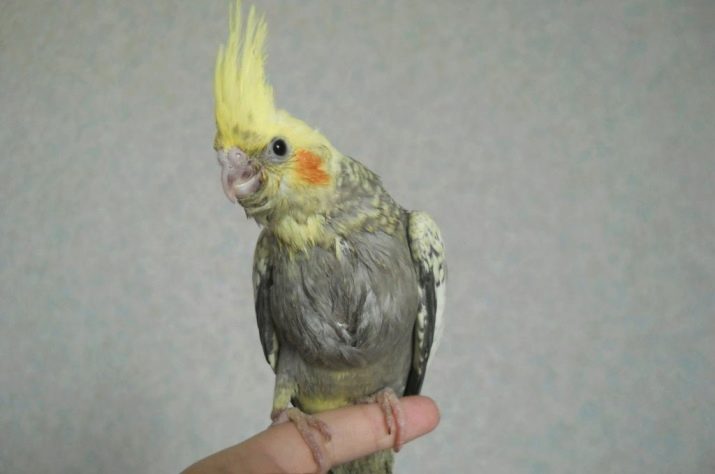
To breed parrots, it is necessary to equip the cage so that home conditions resembled natural ones. You will need to make a house where they will equip the nest. In order for the female to lay eggs, her diet should contain foods with a high calcium content.
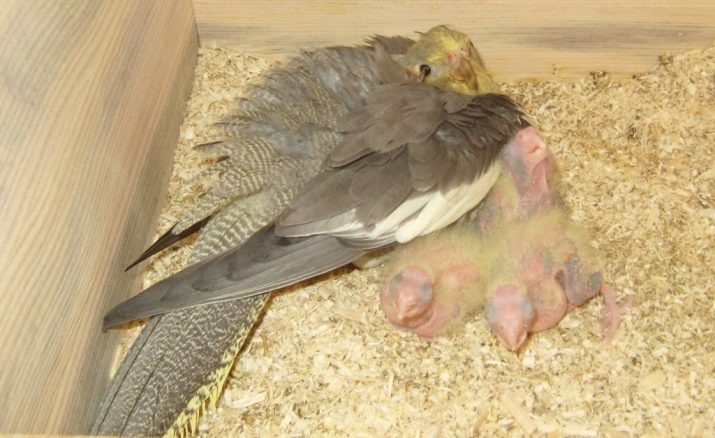
Caring for parrots takes time every day: they need to be fed on time, monitor the presence of water, and regularly clean the cage.
If necessary, the pet needs to cut its nails, provide bathing, show it to the vet once a year, and, of course, communicate regularly.
Disease
If your pet is sick, you will notice a change in his behavior. A parrot can start to rush about in a cage, scream, be aggressive, or, on the contrary, become quiet and indifferent to everything. In this case, without wasting time, consult your veterinarian for advice.
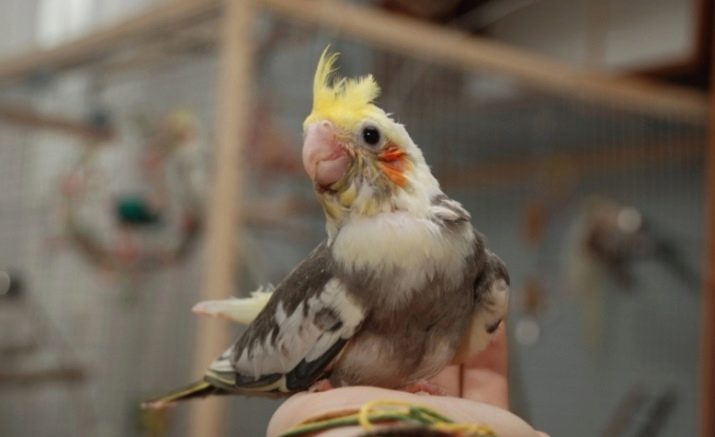
Common diseases of coral.
- Inflammatory diseases - stress, fear, poor nutrition, improper temperature conditions weaken the body, and against this background, under the influence of bacteria and viruses, the inflammatory processes of the beak, and then the digestive system, begin. White plaque appears on the mucous membranes of the tongue, the tongue swells, increases, the bird cannot eat, it is difficult to swallow and breathe. The pet refuses food, he is losing weight, lethargic, and such a condition can quickly lead to his death. For diagnosis, a pap smear is taken from the oral cavity and treatment is prescribed. At this time, feeding is carried out with a liquid mixture through a syringe.
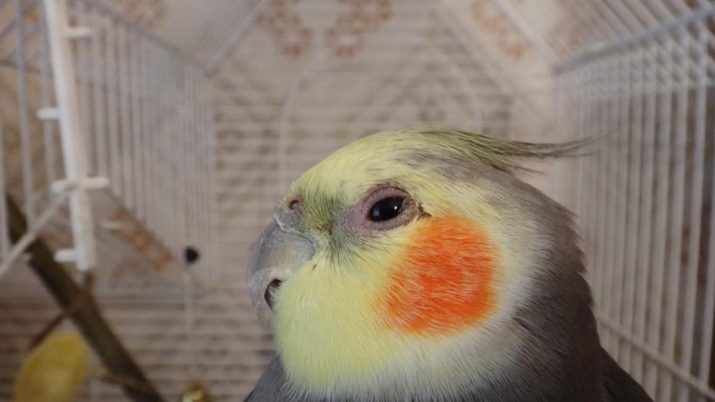
- Beak overgrowth and deformation - the wrong composition of the food contributes to the fact that the keratinized parts of the beak do not grind in a timely manner and grow. This happens on soft feeds without the proper burden of splitting hard seeds. Beak deformation over time leads to its incomplete closure and disrupts the process of eating. To fix this, put cages from branches with bark into the cage, place mineral stones for grinding the beak, and also transfer the bird to another food, in which it will receive solid food with vitamins A, C and calcium.
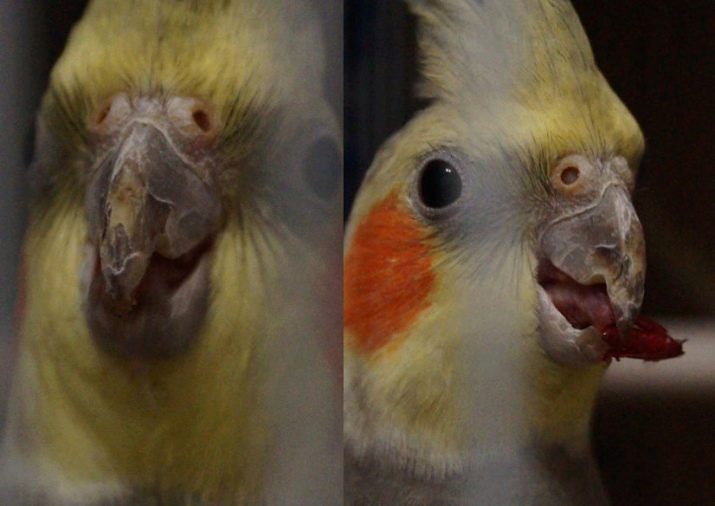
- Scabies mite - the disease is transmitted with poor quality food, through dirty bird objects and from sick birds. The tick parasitizes in the area of the beak, cloaca, near the eyes and on the legs. The decorative appearance of the parrot worsens, the bird weakens and can die. For treatment, the cell and all objects in it are sanitized, and the affected areas of the bird are lubricated once every three days with an aversectin ointment until they recover completely.
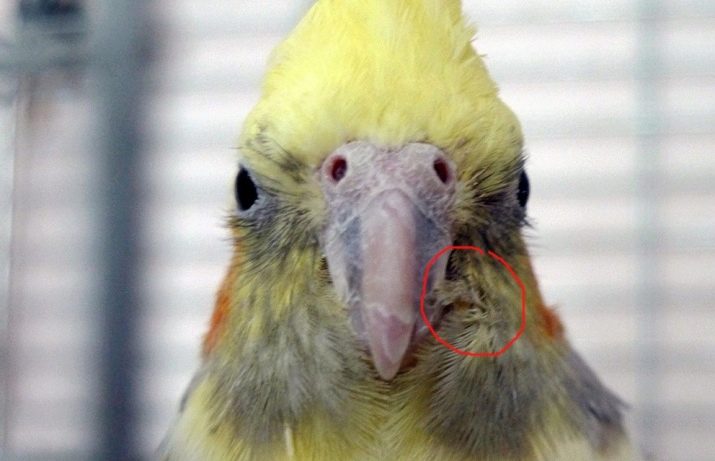
- A parrot plucks its feathers - the cause may be infection, stress, lack of attention, pest-eaters, hormonal disruptions, poor living conditions. Veterinarians advise to exclude protein - cottage cheese, egg - from the diet and add mineral fertilizing. In addition, it is necessary to check and, if necessary, change the conditions of detention. If there are eaters in the cage and the bird itself, it is necessary to carry out an insecticidal treatment.
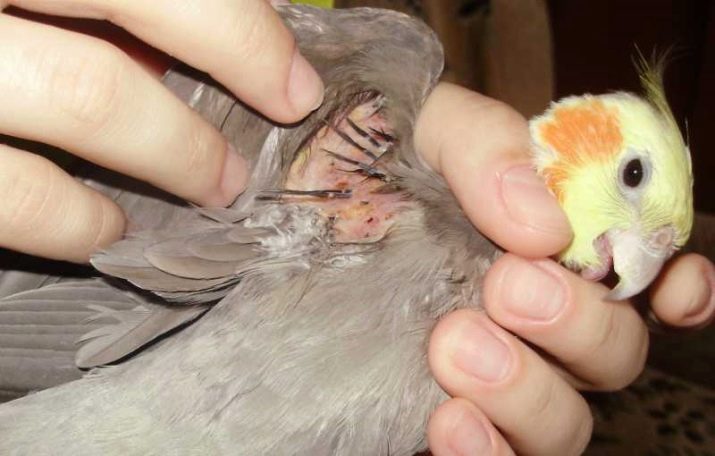
- Gastroenteritis - the bird eats poorly, liquid droppings, green, with half-digested pieces of food and an admixture of blood, may be vomiting. A nervous parrot, constantly coming to the drinker and drinking a lot of water. The nature of the disease is infectious. For treatment, sanitary treatment of the cell is necessary, the exclusion of greens and sprouted grains from the diet. The feed is mixed with the powder of Levomycetin or Phthalazole tablets, pieces of activated carbon or oak bark are added.
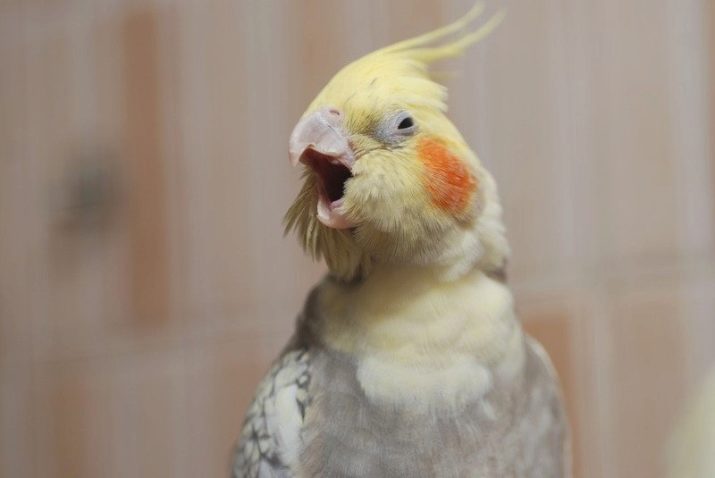
- Intestinal dysbiosis - an infectious disease that affects the intestines and is accompanied by liquid droppings. For treatment, the bird is given “Polyphepan” for 5 days, which is mixed with grain feed. In addition, intestinal enzymes of the Linex preparation are added to the parrot food for two weeks.

Dosages and treatments for the parrot are best discussed with your veterinarian. Self-medication may not bring the desired results and only exacerbate the condition of the pet.
Owner reviews
According to the reviews of the owners of the Corella parrot, communication with the pet gives them a lot of positive emotions. Parrots are often equated with full members of the family over time. Corellas are friendly, sociable and interesting in their behavior. Caring for them is a habit and not as burdensome as it might seem at first. Children love these birds for their restless and cheerful disposition, and adults are happy to watch the leprosy of their feathered favorites.

On how to tame a parrot to a cockatiel, see the video below.
